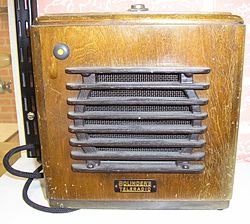
The intercom has been with us for a long time, although we rarely acknowledge its presence. That’s because an intercom on its best behavior prefers to avoid the limelight and let the voice take all the attention.
Like any staple of technology, the Intercommunication Device has seen its share of change over the years.
Analog intercoms
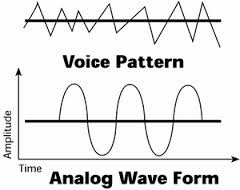
The earliest intercoms were analog, and there are still many in use today. An analog intercom takes the human voice which is analog in nature since it makes variations in the amplitude of the air around us. An analog intercom transforms these variations into continuous electronic pulses that replicate the original wave created by the speaker’s voice and transmits it through the wires. At the receiver end, the pulses are translated back into sound waves and the speaker’s voice is heard by the intended person(s).
Two-Way Communication, One-Way Initiation
When intercoms first began to be used, they were not at all democratic. A boss could initiate a conversation with a secretary in the reception area or her office, or a principal with a teacher and class in a classroom, by speaking into a master, or base station and while they could hear and verbally respond to him these early version desk-mount or wall-mount substations offered no way to initiate a call. It was strictly a matter of speak when you’re spoken to.

Digital Intercoms
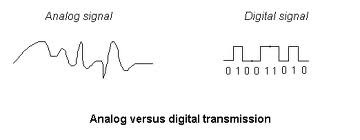
Digital intercoms sample the voice’s analog sound waves and convert them or encode them to a digital signal of 1’s and 0’s. They then send them across the wire in packets of digital information.
These bits of information modulate the amplitude of the carrier wave rather than create an actual analog wave. When the packets arrive at the substation or receiver, they are decoded into audio waves, or in other words, the speaker’s voice. Digital intercoms perform an analog-to-digital operation when encoding the voice’s sound waves, and a digital-to-analog operation when decoding the signal at the receiver end.
The benefits of digital intercoms are
- more simultaneous communication
- better voice quality
- less noise or “interference”
Channels of Communication
Intercoms have evolved to offer broader communication with a “division of labor” or operational hierarchy when it comes to units.
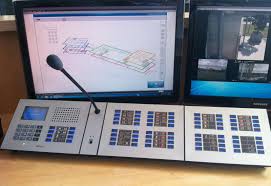
Master or Base Stations control the system and initiate calls to all substations and make announcements over a P.A. loudspeaker

Substations can initiate a call to a base station but not to any other substation in the system.

Door stations are capable of initiating a call to a master station, or in some systems to any connected office or apartment intercom. These usually have a built-in loudspeaker, and sometimes a camera.
Other components
Intercoms also have a paging signal to alert whoever is at the station that someone wants to initiate a call.
Wired intercoms systems, have a power supply incorporated into the base station to not only power it but to feed all the connected units via power cables.
Wireless Intercoms
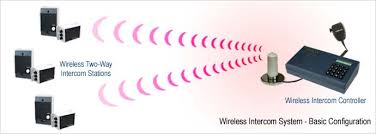
In situations where it is impossible to run the cables and wires necessary for supporting an intercom system, wireless intercoms are an alternative. In the United States and Canada, several radio frequencies are set aside for wireless intercoms and systems.
The benefits of having a wireless intercoms system are that they are easy to install since no wires or cables have to be run between intercom stations which means they are readily scalable and easy to move around when necessary. The downside is they are susceptible to interference from electrical appliances and other wireless devices.
IP Intercoms
IP intercom systems are a new way to page or provide an intercom using the TCIP/IP network which is already in place in virtually any office, school, hospital, or retail business. TCIP/IP network technology is the basis of the internet and local area networks. Using this same protocol that allows information to move between computers on a network and over the internet, IP intercom systems send vocal conversation in digital form across a LAN.
Also known as network intercoms, IP intercom systems use a standard PC equipped with a sound card and microphone as a base or master station. Also, core to the system is an audio amplifier that attaches to the network and drives the IP intercoms residing there. Depending on the size of the IP intercom system, (which precisely because it is network-attached, can range from one intercom to thousands) either PoE or external power supply can power the system, and again, according to the size, maybe one or several universal 25/75v transformers will be needed.
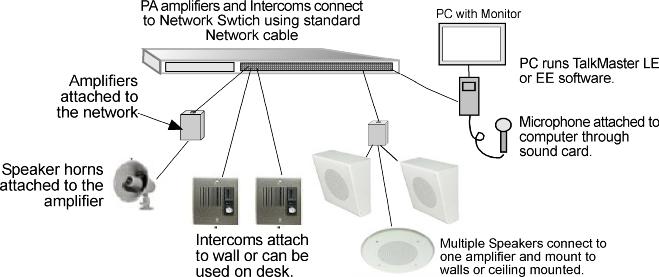
While the hardware can vary according to need, it is the software that controls it all. It can be loaded to any PC and allows users to configure and manage all the intercoms on the network, control communications, and even archive audio.
Benefits of Using an IP Intercom System
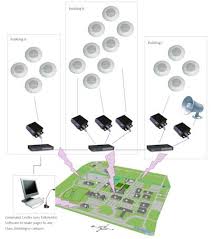
- Reliability – Like other intercom systems, IP based intercoms allow two-way communication but unlike wired intercoms, an IP solution allows users to customize and tailor the situation. Each intercom or group of intercoms has a specific IP address and can be individually accessed or grouped to define a zone. The IP amplifiers can be assigned to either an individual intercom or a small group. In the vent of a failure, only the intercom(s) associated with that particular amplifier module will be affected while the rest of the network-attached paging system continues to operate. In such an event, thanks to a health monitoring feature of the software, the command center is notified within 60 seconds so repairs can be performed to get it up and running again.
- Scalability – Since the system resides in the network, additional zones can be created as needed without the need to lay additional wires. This feature is both time and money-saving doing away with the expense of the wire itself and the labor involved.
- Cabling – Since IP intercoms and amplifiers connect to the network switch using standard network cabling, there is no need for long speaker wire connections from a central amplifier.
Intercoms are showing up everywhere in our connected worlds. Some are able to incorporate connections to public address loudspeakers, telephones, walkie-talkies, and other intercom systems. Some can even incorporate IP cameras and provide IP door control.
If you are interested in IP intercoms, access control, or IP cameras, Kintronics is your IP experts. Call t914-944-3425 to speak to a sales engineer or simply fill out an information request form and we’ll get back to you.